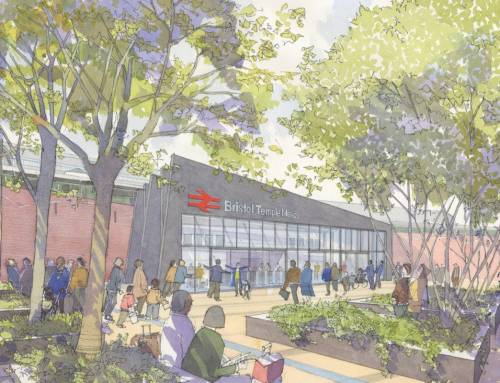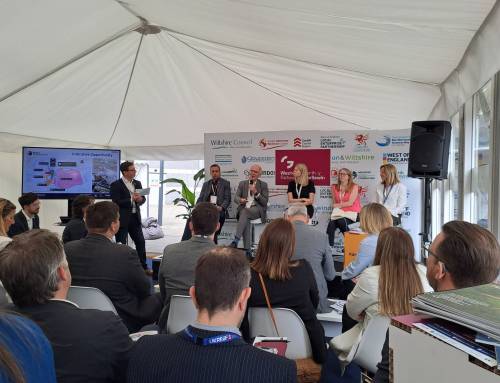About eight months ago, we gave you a light introduction to Bristol’s heat networks: pipelines being set up across the city to provide low-carbon heat to businesses and homes, including in the Enterprise Zone. As more work on them gets underway, we thought it was time to speak to the project team again to get some details about the various aspects of it that might be of interest to our readers.
How are heat networks greener than the alternatives? Bristol is a city with a big target – to become carbon neutral by the year 2050. Heat networks will play an integral part in that journey, by supplying low-carbon heat to buildings across Bristol. They will do this through a network of underground pipes, which are connected to a number of energy centres, including biomass boilers and gas Combined Heat and Power (CHP) plants.
Although some CHP plants will initially run on gas and generate electricity, waste heat produced by the process will be captured and used to heat water and buildings, resulting in more efficient use of fuel and, consequently, lower carbon emissions.
Over time, as the city moves closer to carbon neutrality, low-carbon transition technologies like gas CHP will be replaced by renewable alternatives, further reducing carbon emissions, reducing the city’s reliance on gas and increasing its resilience to fluctuating energy prices.
What exactly is an energy centre? An energy centre is the place where the energy generation machinery is located, including back-up boilers and thermal stores. A variety of energy generation technologies can be installed in one energy centre, from gas to solar power.
How do energy centres work? Energy centres work in much the same way a building’s plant room operates – but consolidate the heating (and occasionally power) needs of neighbouring buildings. This approach has several benefits, including:
- Reducing the space required for HVAC (heating and cooling) plant within the buildings themselves, including boilers and associated infrastructure;
- More efficient generation of heat and power, due to larger and more constant demands. Not only does this result in cheaper sources of energy for connected buildings, but it can improve local air quality (compared to individual heating systems).
- Larger energy requirements allow a greater choice of technologies – whilst gas boilers are suitable in single homes, some larger and renewable sources of heat and power need larger steadier demands to run efficiently.
The energy centres themselves can be installed in existing buildings, such as the 1MW wood pellet boiler installed in Broughton House just outside the Enterprise Zone. They could also be installed in new bespoke buildings, as is often done in major new developments; or the final option is temporary energy centres, for instance having a portable boiler or combined heat and power (CHP) plant within a refurbished shipping container (similar to those close to Engine Shed by Bristol Temple Meads).
Do energy centres make a lot of noise? Energy centres – whether incorporated into a building’s existing plant-room, in a dedicated building or as a temporary solution (for instance: shipping container solutions) – have sound insulation included where necessary, to minimise their noise pollution. The level of insulation depends on the background noise, planning requirements and ultimately the owner’s desired noise levels.
Additionally, planned maintenance and fuel deliveries are best made in weekday working hours – a practice that the council employs in its own wood fuel heating systems. Deliveries and other works are typically cheaper in these standard working hours, and keeping to these hours minimises noise and other disturbance for nearby premises and the wider area.

Heat networks pipework being installed at Canynge House
What are the longer term plans for heat networks? Our heat network project will introduce numerous pipeline phases over the next 20+ years, eventually spanning the whole city. We’re introducing these phases in line with other major infrastructure projects like MetroBus and the arena so that we can minimise the disruption for the people of Bristol.
We will also continue to improve social housing by continuing to connect housing blocks to the network. In 2015 and 2016 alone, five blocks in Hartcliffe were connected to a 360kW wood pellet boiler supplying over 300 flats with low carbon heat and 13 blocks in Redcliffe to a 1MW system, supplying over 700 flats. Combined, these are expected to save the city over 1,700 tonnes of carbon emissions per year.
Will you be connecting private properties as well as social housing? If you are a local building owner or developer, you can discuss potential connections with a member of Bristol City Council’s Energy Service team by emailing HeatNetwork@bristol.gov.uk. Low carbon, affordable heat and energy are just a few of the benefits, so please get in touch!










